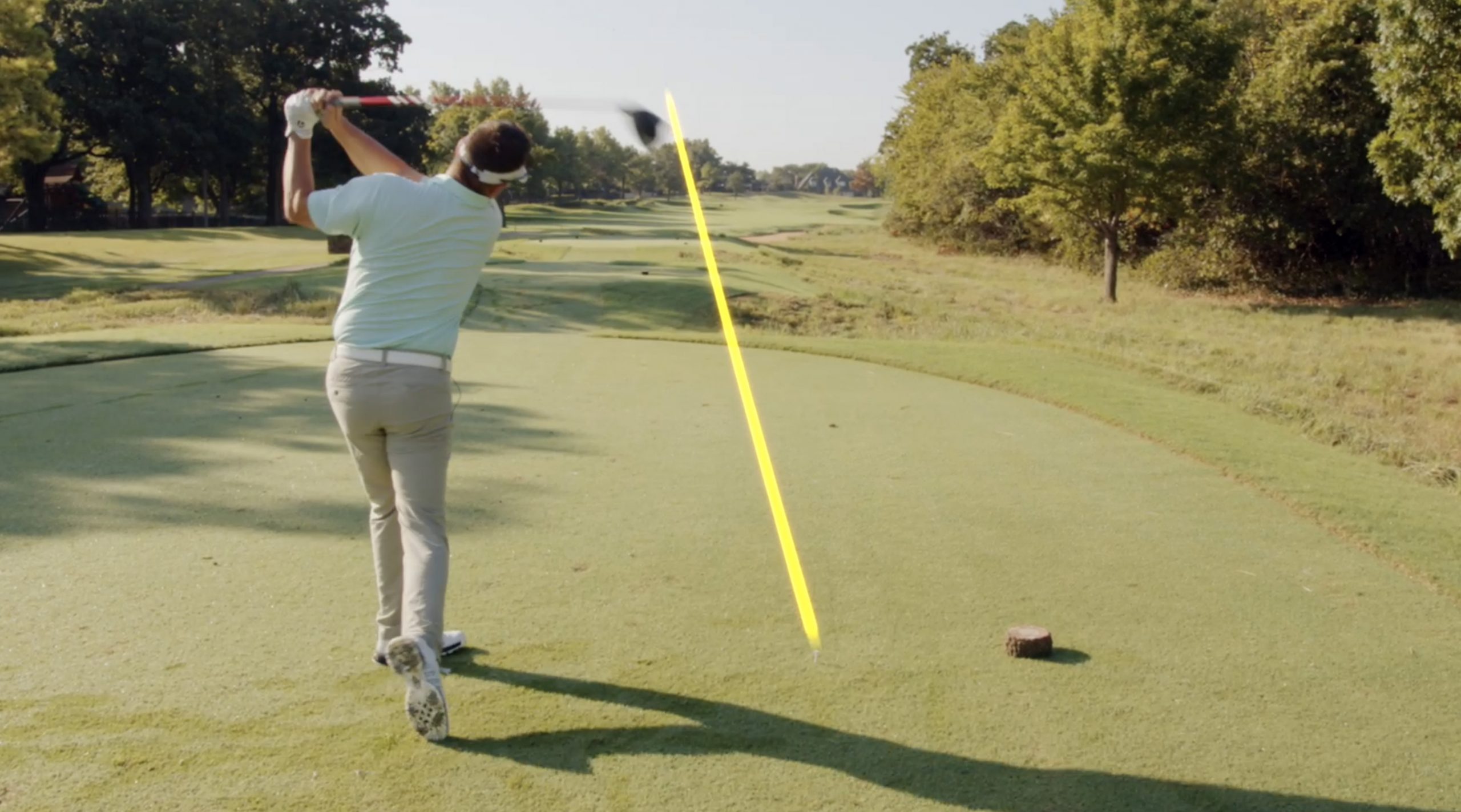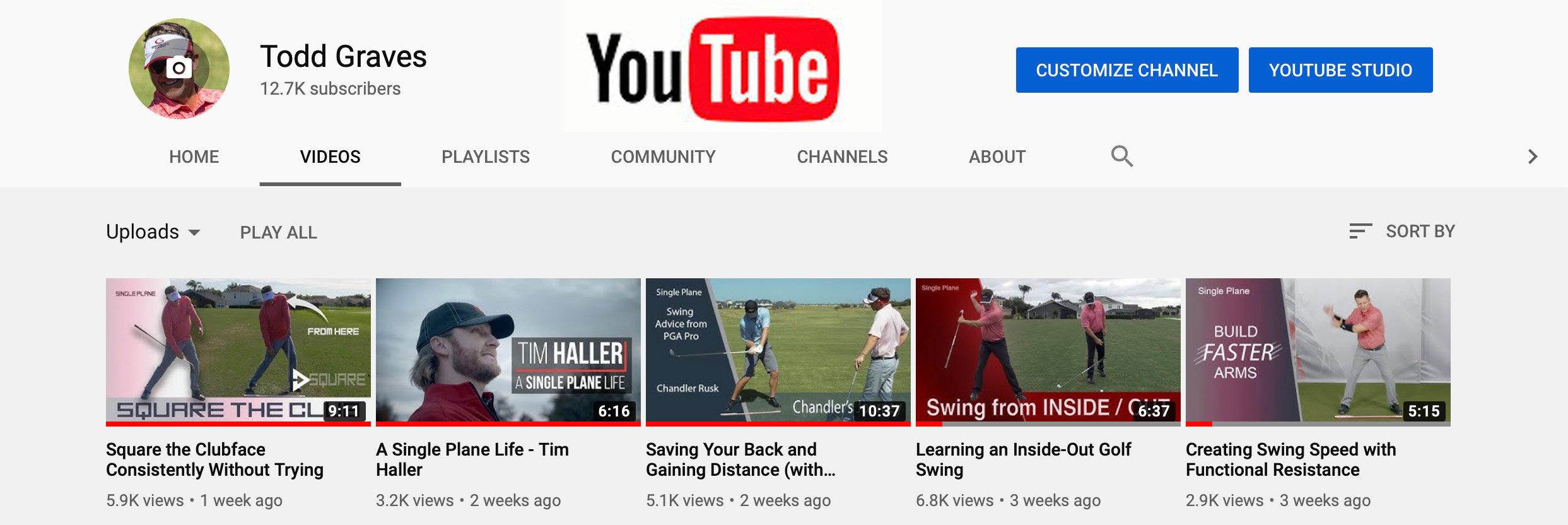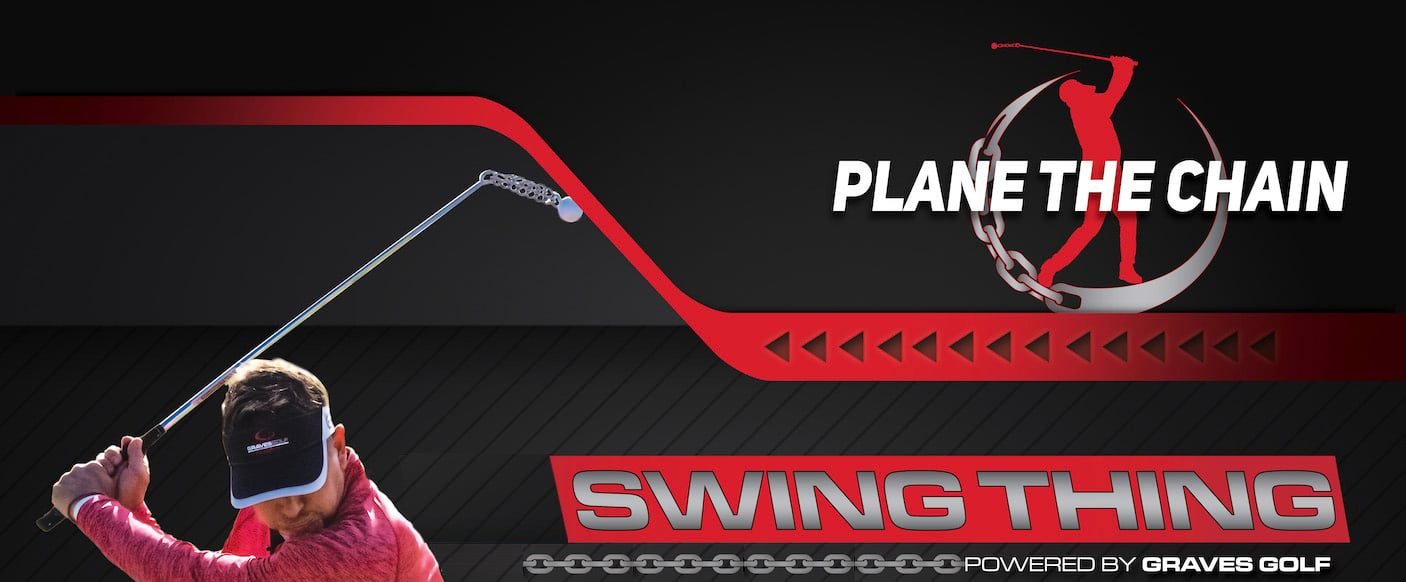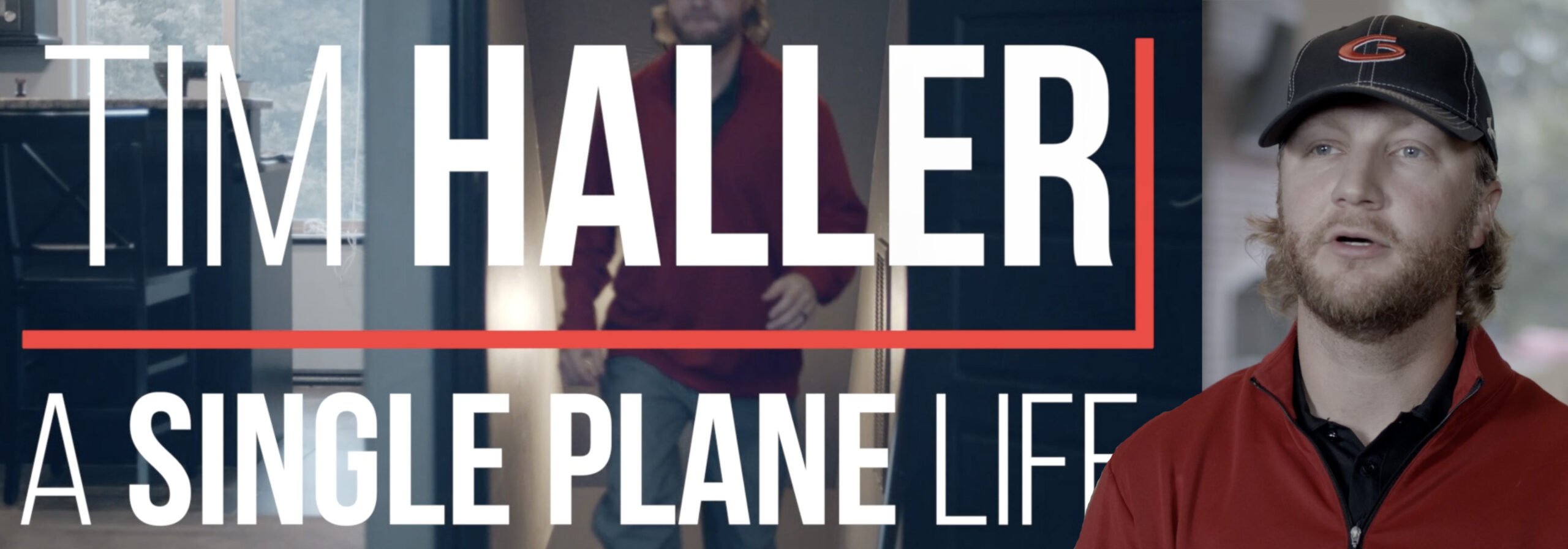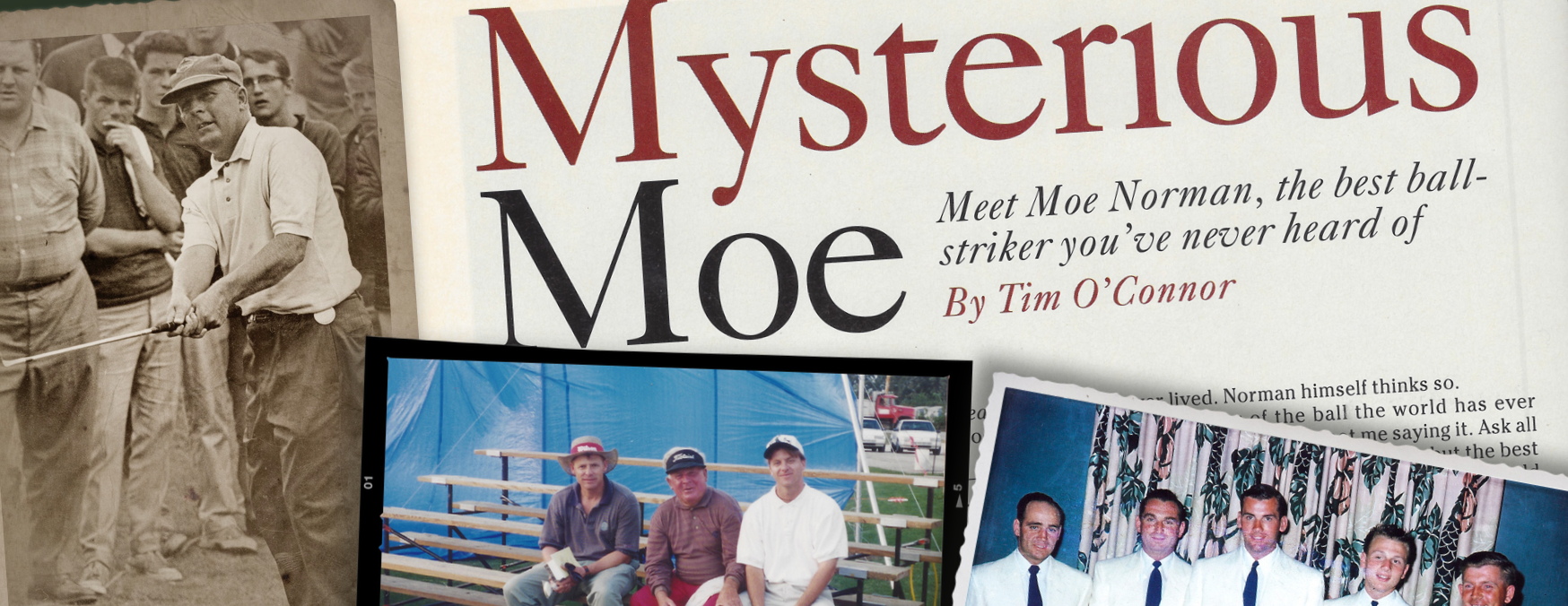By Tim Graves, PGA
Moe at Address
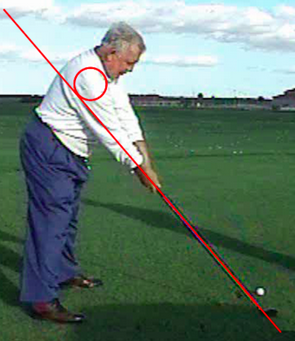
Moe’s body and arm position at address allowed for him to reduce numerous variables in the golf swing.
When you can eliminate variables, you can become more consistent. In the picture above, you can see a red circle on his trail shoulder. The trail shoulder is positioned slightly above the red plane line. Once we establish this address position, it causes a smooth backswing and downswing….
Moe at Top of Backswing
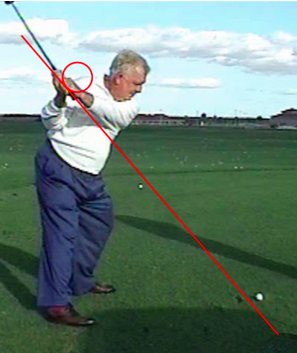
As Moe takes the club back, the trail shoulder rides merely directly up the plane line. How does he do this?
By rotating his body and folding his trail arm. At the top of the backswing, you can see that the trail shoulder is slightly above the plane line, mirroring the position it started in higher up. With this simple movement, the hands are on the plane line, and the club shaft is correctly on the plane
Moe at Impact
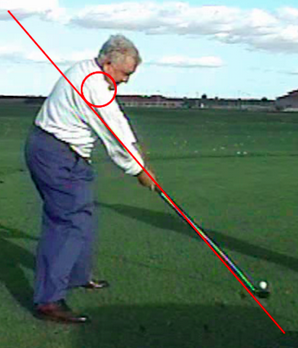
Do you see anything similar here?
That’s correct. The trail shoulder has come right back down the plane line resulting in an up and down motion. Moe called this “the pendulum.”
The only difference between address and impact from this down-the-line perspective is the rotation of Moe’s hips and torso. In this picture to the right, you can see how the hips and chest are rotated open. This has to occur for the hands to lead.
Join Us – Let Us Help You Make It That Simple….
If you have any questions/comments about our Premier Schools, how to become a Member of our Single Plane Academy, or anything else, please contact us at or call (405) 250-6960


